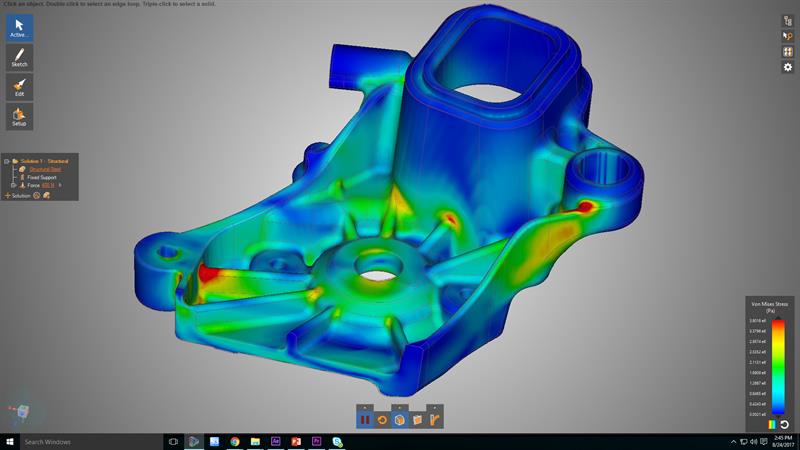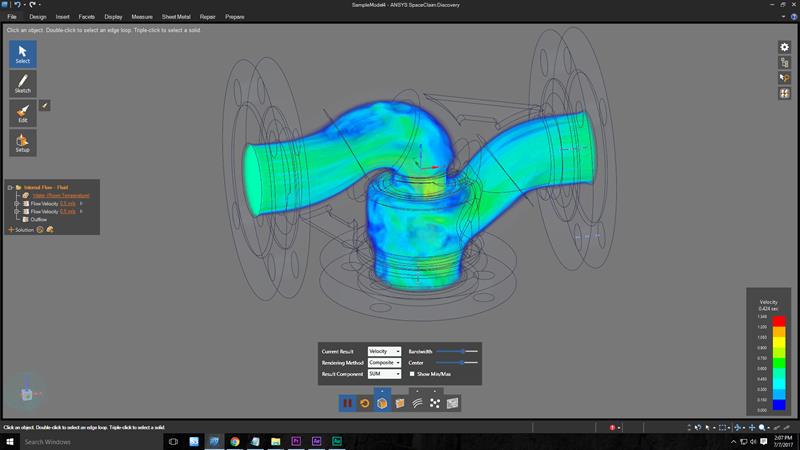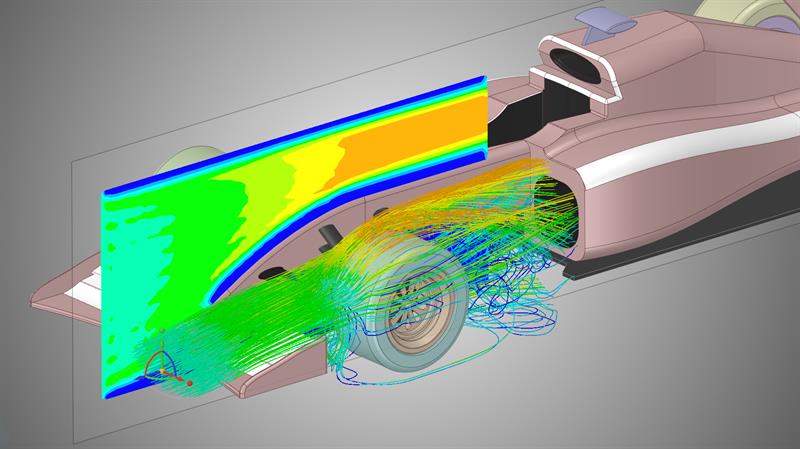For most, a design project starts with geometry creation. Whether that’s the back of an envelope, cigarette box or these days more likely opening a new project in CAD. That, it can be argued, is the genesis of a product’s creation.
However, design concepts are often based largely on an engineer’s experience, judgement, proven assumptions and perhaps even some simple calculations to get an idea of wall thicknesses, fluid flow, materials, or whatever. But this seemingly quick process of brainstorming can have an enormous effect down the line of a product’s development.
“We estimate around 80% of a product’s cost is locked up in this very early development phase,” says Justin Hendrickson, director of product management at simulation software specialists ANSYS. “You make a ton of assumptions, a bunch of decisions and you really don’t fully understand the impact they’ll have later on in the project.”
Inevitably, there comes a point when those assumptions are put to the test. From experience, this does not always end well and can vary from complete re-design work to subtle tweaks. Most commonly it’s something in-between.
Moving to the middle ground
 There’s somewhat of a convergence between mainstream CAD giants and multi-physics simulation specialists, with both offering simulation based design tools that broadly compromise accuracy and resolution for faster and easier usability.
There’s somewhat of a convergence between mainstream CAD giants and multi-physics simulation specialists, with both offering simulation based design tools that broadly compromise accuracy and resolution for faster and easier usability.
This has created an interested ying-and-yang of simulation tools. To many, ‘multi-physics’ tools have become synonymous with complex, difficult to execute, long run time simulations that are notoriously difficult to interpret and get meaningful results. You need an expert.
On the other hand, Solidworks, Autodesk, Siemens and PTC have all begun to offer ‘Lite’ bolt-on simulation capabilities that include variations of finite element analysis (FEA), computational fluid dynamics (CFD) and also fluid flow analysis. These have for the most part gone down well with generalist users as they are quick, avoid meshing difficulties and give decent insights into a problem. However, these tend to be limited in terms of overall performance and customisation, often set up to predict very specific behaviours or problems.
However, an announcement by ANSYS last month has the potential to change the status quo and certainly looks set to move beyond these commonly held beliefs. The simulation company has been vocal about its desire to put simulation in the hands of every engineer by 2020 for some time, currently estimating the figure to be around 1 in 6.
“We believe that if we can get simulation out to every engineer who’s making a decision about a product, then that would really change the way that products are developed,” says Hendrickson. “We see ANSYS Discovery Live as a design exploration and inspiration tool. We see it expanding that frontend design capability, where a lot of people aren’t gaining sufficient insight.”
Real-time intuitive simulation 
What makes ANSYS Discovery Live stand apart from the ‘Lite’ simulation bolt-ons, which have been on the market from major CAD vendors for some time, is that it is epically quick. And it’s quick on most standard laptops and desktops.
Mark Hindsbo, vice president and general manager at ANSYS, explains: “We have taken advantage of the fact that the modern graphics card is really a super computer with thousands of parallel cores. And we’ve rewritten from the ground up the classic simulation algorithms to run natively on that GPU architecture, and that’s what gives you the speed.
“You do need an Nvidia graphics card because we’re taking advantage of the CUDA architecture and you need as a minimum a 4GB card, though we would recommend an 8GB card (approx.. £500). It’s incredible that such a little box offers 11 teraflops of computing power.”
Discovery Live also offers a level of multi-physics simulation. By taking any mutual file format, such as a .step file or any major 3D CAD format, a model can be directly imported into Discovery Live without the need for meshing. Then, by hitting the ‘Create Solution’ button, there are four physics simulations to choose from: thermal conduction, fluid flow, structural and frequency analysis.
Initial boundary conditions can be quickly input (but easily changeable) such as internal or external flow, and inlets and outlets defined. That’s it, a full 3D volumetric simulation will begin running.
So, for example, if you want to look at the recirculation of a fluid over a sharp edge to assess and control turbulence, you can change dimensions, change the flow rate, its direction, fluid temperature, ambient temperature outside the pipework, the material of the pipework or whatever. Critically, the model doesn’t restart but update, so visually it appears as if any change is actually happening, such as a change in flow rate or even direction. So, rather than jumping to the new conditions that have been entered, the model gradually merges them in as per the inherent laws of physics.
 There are also many CAD-like features, for example, designers can easily cut though a volume to get a 2D plane view of the simulation, which continues to run, it is not a freeze frame representation. And, while results can be numerical, part of the charm of Discovery Live is the intuitive real-time visualisations that are presented.
There are also many CAD-like features, for example, designers can easily cut though a volume to get a 2D plane view of the simulation, which continues to run, it is not a freeze frame representation. And, while results can be numerical, part of the charm of Discovery Live is the intuitive real-time visualisations that are presented.
“This is the power of simulation, you learn something from what it’s showing you,” says Hendrickson. “But I would argue the very next thing you want as a designer is you want to be able to modify the design. So, as fast as you can visualise what’s going on and learn from it, you can make changes and evaluate them.”
With speed usually comes a compromise in accuracy, and unsurprisingly there is a trade-off here.
“We don’t intend this tool to be used for validation,” says Hendrickson. “The experts will still want every knob and dial, they’ll still want full fidelity. If you need a fluid tool that captures every single detail, bit of turbulence and eddy current, this tool is not for you.
“We’re not shooting for five decimal place accuracy, we’re shooting for things like, ‘is this accurate enough to make a critical design decisions on?’ We have confidence that this offers the right level of resolution for design engineers. Then if you want to go to five decimal points for validation, then you go into traditional simulation tools.”
Discovery Live does make a lot of assumptions for you. ANSYS says it has gone back over the last 40-plus years of experience to see what the most typical set-ups are for a given simulation. That’s not to say of course that any variable can’t be changed and customised. The idea, however, is to get the simulation up and running as quickly as possible.
Hindsbo says: “The novice user wants to start somewhere and so we assume that the fluid is air, for example, and at room temperature. But if you want to change it to some other liquid, set the temperature differently or change the materials then you can easily do that.”
| TRY IT… FOR FREE! ANSYS is currently making Discovery Live available as a free download from its website as a technology preview before it’s full commercial release in Q1 of 2018. Go to ansys.com/discovery to download now. |











